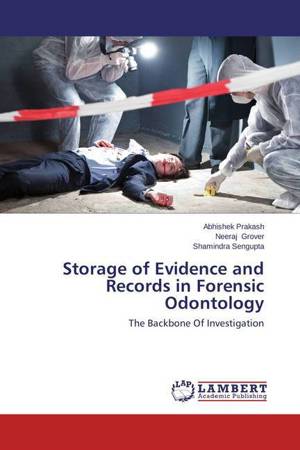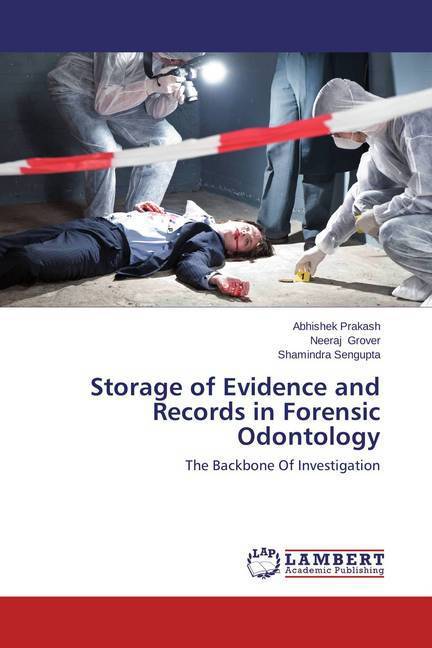
- Afhalen na 1 uur in een winkel met voorraad
- Gratis thuislevering in België vanaf € 30
- Ruim aanbod met 7 miljoen producten
- Afhalen na 1 uur in een winkel met voorraad
- Gratis thuislevering in België vanaf € 30
- Ruim aanbod met 7 miljoen producten
Storage of Evidence and Records in Forensic Odontology
The Backbone Of Investigation
Abhishek Prakash, Neeraj Grover, Shamindra Sengupta
Paperback | Engels
€ 66,45
+ 132 punten
Omschrijving
Forensic Odontology has been defined by the Federation Dentaire Internationale (FDI) as that " branch of dentistry which, in the interest of justice, deals with proper handling and examination of dental evidence, and with the proper evaluation and presentation of dental findings". Different evidences used for identification of victims and culprits are teeth, jaw bone, saliva, radiographs, bite marks, palatal rugae, dental records, dental casts, DNA, blood, lip prints, denture and microscopic slides. As evidence is the backbone of all investigations, strict procedure and techniques must accompany the collection and preservation of evidence. The central goal is to maintain evidence in a state as close to that it was in when the incidence in question occurred. Since the evidence can come in so many different forms, the packaging and storage of evidence must be equally diverse. Failure to follow proper procedure and techniques in collecting and storing evidence can significantly impact a criminal case or identification of an individual.
Specificaties
Betrokkenen
- Auteur(s):
- Uitgeverij:
Inhoud
- Aantal bladzijden:
- 88
- Taal:
- Engels
Eigenschappen
- Productcode (EAN):
- 9783659574344
- Verschijningsdatum:
- 14/07/2014
- Uitvoering:
- Paperback
- Afmetingen:
- 150 mm x 220 mm
- Gewicht:
- 141 g

Alleen bij Standaard Boekhandel
+ 132 punten op je klantenkaart van Standaard Boekhandel
Beoordelingen
We publiceren alleen reviews die voldoen aan de voorwaarden voor reviews. Bekijk onze voorwaarden voor reviews.










